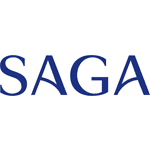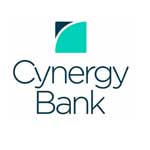Best tax-free cash ISAs 2025
Want to boost your savings? Opening a tax-free cash ISA is a surefire way to make some extra cash, and they're super easy to set up. Here's your beginner's guide to ISAs.
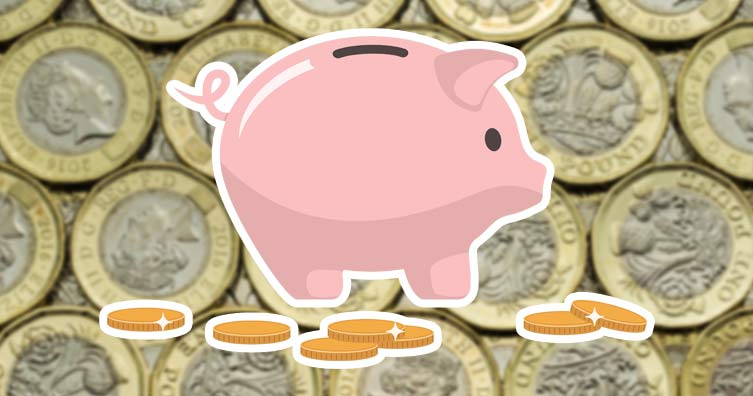
Credit: Linda Bestwick (background), Aurora72 (foreground) – Shutterstock
In our latest National Student Money Survey, 77% of surveyed students said they had at least some money in savings. If you're one of them, you might want to consider opening a cash ISA.
ISAs, or 'Individual Savings Accounts', are basically savings accounts that let you store your money without having to pay tax on any interest you earn.
Despite a change in the law that means it's unlikely you'll pay tax on any interest as a student, there are still some perks to opening an ISA. Read on for the pros and cons of opening an ISA as a student, as well as our top picks.
What's in this guide?
What are ISAs and how do they work?
Put simply, cash ISAs are a type of ISA, which in turn is a type of savings account. For reference, there are five main types of ISA:
- Cash ISAs
- Help to Buy ISA (no longer available to new customers)
- Innovative finance ISAs (where you're essentially lending someone money, and they'll pay it back with interest)
- Lifetime ISAs
- Stocks and shares ISAs (a way to invest in the stock market without paying tax).
As we touched on earlier, the big selling point of an ISA used to be the fact that you don't have to pay any tax on the interest the account pays out. This is something you previously did have to do with the interest paid by other types of accounts.
But thanks to a change to the law in 2016, basic-rate taxpayers (anyone earning under £50,270 per year) can now earn up to £1,000 of interest tax-free in any savings account each year. This has led some to argue that ISAs are now redundant, but we'd suggest that isn't the case, as we'll explain shortly.
Types of cash ISA
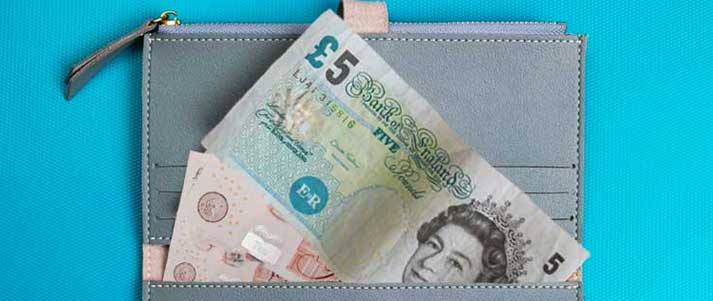
Credit: Yevgen Kravchenko, kamui29, Bell Photography 423 – Shutterstock
Much like other savings accounts, cash ISAs come in two main forms:
Easy-access cash ISAs
An easy-access cash ISA allows you to withdraw your cash if and when you need to. But, crucially, you may not be able to put it back if you've hit the annual ISA allowance (£20,000 for the 2024/25 tax year). This applies to the amount you can deposit and not the overall balance (we'll explain this in more detail in a second).
Interest rates on easy-access ISAs are usually variable. This means they may increase or decrease in the future. They may include a tempting (but temporary) higher bonus interest when you first open the account.
Bonus rates, by contrast, are usually fixed, meaning they'll stay the same for the period they apply.
Fixed-rate cash ISAs
Fixed-rate cash ISAs come with a guaranteed (usually higher) interest rate, but your money's locked away for a fixed period. This is typically (but not always) between one and five years.
The trade-off for these higher interest rates is that, unfortunately, you'll be charged a penalty fee if you withdraw early. You may lose any interest you've accumulated, and could even lose money on your original investment if the penalty fee exceeds the interest you gained.
In other words, only go for a fixed-rate ISA if you're happy to put your money away and leave it there.
How much money can you put in an ISA?
You can put a maximum of £20,000 a year into your ISA. This applies across all accounts if you have multiple ISAs.
It's each deposit that counts towards your limit – not how much you have in there. So, if you had £30,000 in an ISA at the start of the tax year, you could still add an extra £20,000 to it over the next 12 months.
Sadly, this also means that if you deposit £1,000 but decide to withdraw £500 a few months later, it will still count as a £1,000 bite out of that year's ISA allowance.
Flexible ISAs
There is some nuance to the deposit allowance if you have a flexible ISA. If you hold one of these accounts, you can withdraw and return money to your cash ISA in the same tax year (6th April – 5th April) without it reducing your allowance for the year.
So, to use the same example as above, imagine you had £30,000 in your ISA at the start of the tax year. You then put an extra £1,000 into the account, reducing your allowance to £19,000 for the rest of the year.
If, however, you then withdraw £5,000, you can then put £24,000 into the account in the same tax year: the £5,000 you took out, plus the £19,000 you had remaining on the original allowance.
Remember though: this trick only applies to flexible ISAs (each cash ISA will say if it's flexible or not). If your ISA isn't flexible, your allowance in this example won't increase to £24,000, so returning the £5,000 you withdrew would decrease your remaining allowance to £14,000.
Can you have two ISAs at the same time?
You can have more than one cash ISA, but you can only open or pay into one each year. Note that you can pay into more than one type of ISA each year (e.g. a cash ISA and a Stocks & Shares ISA), just not two cash ISAs.
You can also switch from one ISA to another if you spot a higher interest rate with another provider. But you should check that the new ISA allows transfers and your current bank isn't going to charge you a penalty for withdrawing the money (if you have a fixed-rate ISA).
Why should you open an ISA?
Admittedly, the £1,000 tax-free interest allowance for basic-rate taxpayers may make you think an ISA is no better than your bog-standard savings account.
But it's worth remembering that all ISA interest is tax-free, no matter how much interest you earn elsewhere. So even if you exceed the £1,000 interest limit with your other savings accounts, your ISA interest will always be tax-free.
What's more, the £1,000 allowance only applies to basic-rate taxpayers (those earning under £50,270 per year). As soon as you enter the higher-rate bracket (when you earn between £50,271 – £125,140 per year) your tax-free interest allowance drops to £500. If you're the world's richest student and earn over £125,140 per year, you'll have no tax-free allowance at all.
And crucially, as all ISA interest is tax-free, it means it is hidden from the Student Loans Company. Remember, your Student Loan repayments are based on your taxable earnings, and the more you earn, the more you repay each month.
Regardless of how much interest you're earning in an ISA account, it will never be factored into your earnings. So, it will never increase your Student Loan repayments.
Should you open an ISA or a savings account?
As you might have twigged by now, it's best to think long-term when it comes to ISAs.
Right now, it might seem unrealistic to think about earning over £1,000 in interest a year, or being in the higher-rate tax band. But if you save over a long period and secure a well-paid job, you might find yourself getting taxed on your interest after all.
Say you've kept all your savings in your current account or savings account since your student days, and after a few years found yourself having to pay tax on your interest.
You may then decide to move your savings into an ISA to get that interest tax-free, but there's a catch: you can only deposit a maximum sum of £20,000 a year into an ISA.
Again, this may sound like a huge amount of money. But, if you've already been paying into a Lifetime or Help To Buy ISA that year (something to consider!), you may not be able to transfer all your savings into an ISA.
That said, despite the long-term benefits of opening an ISA now, the interest rates aren't always the best.
You might earn more by putting your money into a high-interest savings or current account. But bear in mind that you may have to pay tax on the interest. This, in turn, could count towards what benefits you can get, your Maintenance Loan entitlement and Student Loan repayments.
How to open an ISA account
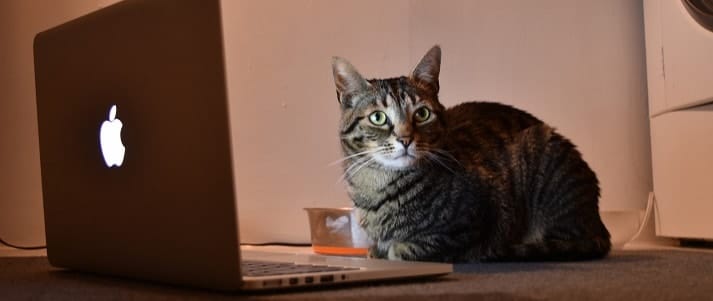
Credit: Violet Giddings – Flickr
Setting up an ISA is pretty easy. In most cases, you can do it online, in person or by phone.
Different banks will have different policies on how exactly you set up an account. But, usually, you won't need much more than your National Insurance number, some ID and proof of address. And if you're setting up an ISA with your current bank, you might not even need that much.
Of course, you also need to make sure that you haven't set up another cash ISA in the same tax year.
What to consider before opening a cash ISA
Here are some important questions to ask before you open a cash ISA:
- What's the interest rate, and does it include a temporary bonus?
- Can you get a better deal by transferring an existing ISA (and are you allowed to transfer money in/out)?
- Can you withdraw your money if you need it (i.e. is it an instant-access cash ISA)? Some accounts charge a notice period penalty, whereby you lose a certain number of days' interest for withdrawing cash.
- Some accounts will pay interest monthly/annually into your current account – handy for extra spending money.
- Make sure the provider uses the Financial Services Compensation Scheme (FSCS) to protect your savings up to £85,000 (all the ones we've listed below are).
Best easy-access ISAs
If you want the benefits of tax-free interest, but also want the safety net of having access to your money when you need it, look into easy-access accounts.
Just remember that the following interest rates are variable. This means they could go up or down after you open the account.
Taking into account the interest rates and opening deposits, here are our top pick easy-access ISAs:
-
Plum Cash ISA (5.01%)
Open with: £1
Interest paid: Monthly
Access: App
Transfers in allowed? Yes
Flexible? No
Withdrawals: Limited to three every 12 months (interest rate drops to 2.5% from the fourth withdrawal onwards).
Extra info: The account's interest rate of 5.01% AER includes a bonus rate of 1.22% AER for the first 12 months (without the bonus the interest rate is 3.79% AER). If your balance drops below £100 the interest drops to 2.5%.
-
Chip Cash ISA (4.85%)
Open with: £1
Interest paid: Monthly
Access: App
Transfers in allowed? Yes
Flexible? Yes
Withdrawals: Unlimited.
Extra info: The account's interest rate of 4.85% AER includes a 0.27% AER boost for the first six months (without the boost the interest rate is 4.58% AER).
-
Tembo Cash ISA (4.8%)
Interest paid: Monthly
Access: App
Transfers in allowed? Yes
Flexible? Yes
Withdrawals: Unlimited.
-
Virgin Money Defined Access Cash E-ISA (4.31%)
Open with: £1
Interest paid: Monthly or annually
Access: Open and access online
Transfers in allowed? Yes
Flexible? No
Withdrawals: Limited to three every 12 months (interest rate drops to 1.25% from the fourth withdrawal onwards).
-
Marcus Cash ISA (4.3%)
Open with: £1
Interest paid: Monthly
Access: Online
Transfers in allowed? No
Flexible? No
Withdrawals: Unlimited.
Extra info: The account's interest rate of 4.3% AER / 4.22% tax-free includes a bonus rate of 0.49% tax-free for the first 12 months (without the bonus the interest rate is 3.79% AER / 3.72% tax-free).
-
SAGA Cash ISA (4.3%)
Open with: £1
Interest paid: Monthly
Access: Online
Transfers in allowed? No
Flexible? No
Withdrawals: Unlimited.
-
Yorkshire Building Society Easy Access ISA (4.05%)
Open with: £1
Interest paid: Annually on 31st March
Access: Open and access online
Transfers in allowed? Yes
Flexible? Yes
Withdrawals: Unlimited.
Best fixed-rate ISAs
You'll often need a larger deposit to open a fixed-rate ISA, and you'll be penalised for withdrawing money early. In return, you'll usually get a better interest rate than an easy-access ISA.
Fixed-rate ISAs with longer terms (i.e. when your money is locked away for longer) usually have better interest rates. Balance how much you'd like a good interest rate against how soon you want to cash out.
Here's our pick of the top fixed-rate ISAs, taking into account the interest rate, minimum deposit and term:
-
Cynergy Bank Fixed and Variable Cash ISA (4.45%)
Open with: £500
Interest paid: Annually or at maturity
Access: Online
Transfers in allowed? Yes
Early withdrawal penalty: When withdrawn within the fixed rate period, there's a penalty of 180 days' interest
Extra info: If you open a fixed-interest rate ISA, Cynergy Bank will also open a variable-rate ISA for you.
-
Virgin Money 1 Year Fixed Rate Cash E-ISA (4.1%)
Open with: £1
Interest paid: Monthly or at maturity
Access: Open and access online
Transfers in allowed? Yes
Early withdrawal penalty: For any withdrawals within the fixed rate period, you'll be charged the equivalent of 60 days' loss of interest on the amount withdrawn.
-
Barclays 1-Year Flexible Cash ISA (4%)
Open with: £1
Interest paid: Monthly or at maturity
Access: Open and access online, via the app, in branch or by phone.
Transfers in allowed? Yes
Early withdrawal penalty: None for the first three withdrawals of up to 10% each. Otherwise, there's a charge that's equivalent to 90 days' tax-free interest (based on the balance at the time).
Use these money-saving resources to save some extra funds for your ISA.






